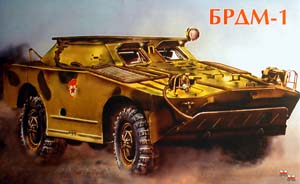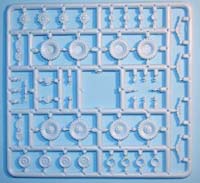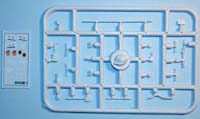Siga Model's 1/72 BRDM-1
By Chris Banyai-Riepl
 |

 |
 The Kit
The Kit Moving to the top sides, the upper hull is provided in two pieces, with the main top hatches separate. The usual details are provided separately and include headlights, viewports, tools, machine gun and antenna mounts, among others. Some of the finer details might better be replaced by thin wire or plastic card, but even out of the box the results should be decent enough.
Moving to the top sides, the upper hull is provided in two pieces, with the main top hatches separate. The usual details are provided separately and include headlights, viewports, tools, machine gun and antenna mounts, among others. Some of the finer details might better be replaced by thin wire or plastic card, but even out of the box the results should be decent enough. Conclusion
Conclusion